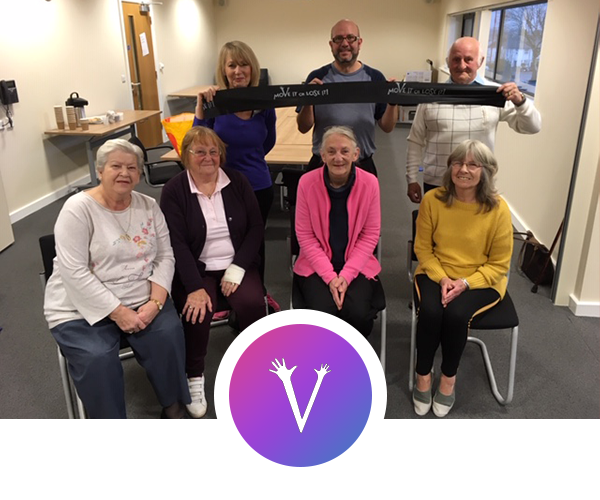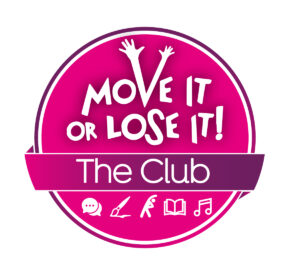Getting ready to go back to classes

75% of our Move it or Lose it Club members have said they are ready and looking forward to going back to (or starting) face-to-face classes soon. Our instructors are ready to welcome them back, not with open arms exactly but with distancing, hand gel, masks and all safety measures in place.
So, what should you consider when getting ready to go to a group exercise class? Here’s a few things to think about to make sure you’re safe and to help you avoid any injuries.
Start off slowly and take it steady. It sounds obvious but after such a long period of not being able to do the type of exercises you do in a class, you might be surprised at how much it takes out of you. You may have been walking or gardening – both excellent activities – but if you haven’t done any strength training, stretching or balancing then you need to hold back on the desire to start from where you left off.
Apparently, in January there is a rise in injuries, particularly of knees, hips and shoulders, when everyone rushes to join a gym for their New Year’s Resolution following the excess of Christmas. Whether we’re hitting the gym or returning to a dance class, our joints need time to acclimatise again, especially after a year or more of being inactive.
Begin by increasing your cardio exercises at home to build up general fitness and make sure you’re thoroughly warmed up before doing any strength or flexibility exercises. Walking upstairs is a simple way to get your heart rate up and works all the muscles in your legs and glutes. Build up to 5 minutes of walking up and downstairs, as long as you can do this safely. No stairs, marching in place is a good start – it helps if you play some lively music to keep you going.
Reduce the range of movement you put your joints through at first – bit by bit you can increase this over the coming weeks and months.
Use a lower resistance band than you’re used to. This is a great way to prepare without straining your muscles. Where you grip the band also makes it easier (or harder) too. The Move it or Lose it resistance bands start with red, green, blue then black. If you’re using weights, then dial it down and lift smaller weights at first and do fewer repetitions.
You probably won’t notice if you’re overdoing it at the time, it’s the day or two afterwards when you get some achy muscles and joints. This is called delayed onset of muscle soreness (or DOMS) and it’s perfectly normal when you do a new activity and should subside within a couple of days. Better to take it steady at first and then progress week by week to build up your strength. If you have pain that persists then it’s a sign you’ve overdone it and you may need medical advice.
Remember it’s not just your muscles that will have lost strength, your tendons and ligaments will probably be stiffer too and they need easing back in gently. This is especially true if you’ve been living in slippers or soft shoes – putting on your ‘proper shoes’ or a new pair of trainers will feel odd and place different strains on your feet and ankles. Get yourself acclimatised by wearing your shoes in before your return to class.
If you have not been able to do much walking or exercise then you will be de-conditioned, so don’t expect to suddenly get back to exercising for a full hour straight away. You can take control by working at a rate that suits you – your speed, your intensity, your range of comfort. On the day after your class, just do some light activities to help your muscles recover although it’s important that you keep moving rather than sitting down all day!
What else can you expect when returning to a group exercise class? If it’s a Move it or Lose it class, then we have put measures in place to ensure everyone’s safety in line with governing body guidelines. Here’s what to expect while the Covid-19 restrictions are still in place:
- Your instructor will contact you to book your place, this is to ensure that maximum capacity is not exceeded given the spacing restrictions
- Your instructor will go through everything in advance, so you know what to expect and how to make payment to reduce contact (such as not paying in coins or making payment in advance online)
- Each venue will vary, but as a rule you’ll be asked to use specific entrances and exits, not to gather too early before the class starts, to wear a mask until you reach your chair or station and to bring your own equipment (resistance bands and balls etc)
- Try to bring only the things you’ll need for the class; it’s a good idea to bring your own hand sanitiser and wipes although the area will have been cleaned before you arrive
- It might be tempting but please don’t move your chair or stand too close to others, the space will have been set up to ensure you have 2 or 3 square metres each depending on the type of exercise you are doing
- Wherever possible, windows or doors will be open for good ventilation so you might want to wear layers to make sure you’re not cold at the start or end of the class
- You may be asked to complete a new form before you begin called a PAR-Q (physical activity readiness questionnaire) which ensures you’re safe to exercise
- At the end of the class, you’ll be asked to put your mask back on and leave rather than stay behind to chat – hopefully it won’t be too long before we can resume our normal social gatherings which we know are so important and make the classes so friendly
If you’re not sure how to get yourself ready to go back to exercise classes, then join our online club to follow live or on-demand sessions free of charge for a month using the code BLOG at checkout. There’s so many videos to choose from to help improve your fitness levels, strength, flexibility and balance and give you the confidence to return to the face-to-face classes we’ve all been missing.
